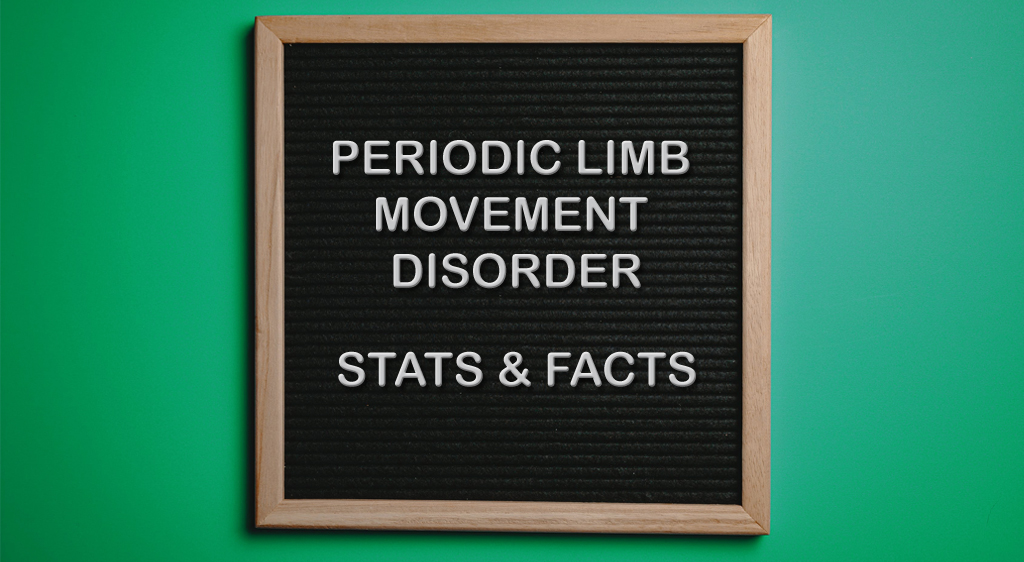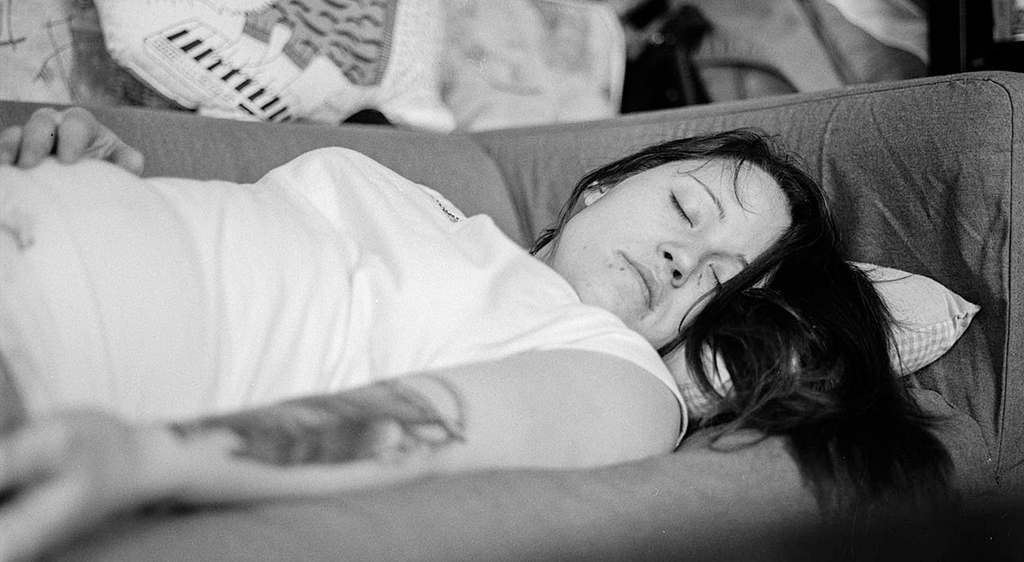Periodic Limb Movement Disorder Statistics
Periodic limb movement disorder (PLMD) is a condition wherein people repetitively jerk their legs and arms when asleep. When asleep, people with PLMD are unaware that their legs are moving. However, the movements can disrupt sleep. Because PLMD can disrupt sleep, it is considered as a sleep disorder. (Healthline), (Cleveland Clinic)
The Most Surprising Periodic Limb Movement Disorder Statistics
- Estimates show that PLMD is present in 4 to 11% of adults.
- The greatest number of leg movements occur in the first 4 hours of sleep.
PLMD is present in:
- Only about 2% of people below 30 years old.
- About 5% of people between 30 and 50 years of age.
- About 25% of people between 50 and 60 years of age.
- About 30% of people 65 years of age or older.
General Sleep Periodic Limb Movement Disorder Statistics and Facts
1. Periodic Limb Movement Disorder was first described in 1953.
Charles P. Symonds was the first to report the diseases. He called it nocturnal myoclonus because he interpreted it as a form of nocturnal epilepsy.
(US National Library of Medicine National Institutes of Health)
2. The movements occur every 10 to 90 seconds.
The frequency of the movements can vary. Moreover, how long these periodic movements last can range from minutes to hours.
(Healthline), (Cleveland Clinic)
3. Many of the movements are flexions that last between 0.5 to 5 seconds.
The periodic leg movements are characterized by dorsiflexion of the ankle, dorsiflexion of the toes and a partial flexion of the knee and sometimes the hip.
(Sciencedirect)
4. Periodic limb movement disorder statistics show that PLMD is present in more than 9% of Caucasians.
This contrasts with African Americans, who have an estimated PLMD prevalence of 4.3%.
(US National Library of Medicine National Institutes of Health)
5. Periodic limb movement disorder is defined with a PLMS index greater than 5 per hour.
Part of the diagnosis for PLMD is the number of periodic limb movements in sleep (PLMS). The PLMS Index (PLMI) is calculated by dividing the total number of PLMs by hours. Below are the different PLMI categories:
- Mild: PLMIs between 5 and 25
- Moderate: PLMIs between 25 and 50
- Severe: PLMIs greater than 50
To be diagnosed, adults and children must have a PLMI of at least 5/h and 15/h respectively.
(US National Library of Medicine National Institutes of Health), (Science Direct), (Journal of Postgraduates Medicine)
6. Other sleep disorders also have periodic limb movements in sleep.
Besides restless legs syndrome, other sleep disorders also have PLMS. Because of the overlaps in symptoms, part of the diagnosis process for PLMD is to eliminate the other possible sleep disorders.
(US National Library of Medicine National Institutes of Health)
Other Sleep Disorders with Periodic Limb Movements in Sleep
7. Periodic limb movements in sleep are present in up to 75% of narcolepsy cases.
Narcolepsy involves excessive sleepiness, sleep paralysis, hallucinations, and in some cases episodes of cataplexy (partial or total loss of muscle control).
(Sleep Foundation)
8. Periodic limb movements in sleep are present in up to 70% of rapid eye movement behavior disorder (RBD).
RBD involves acting out dreams. The dreams that RBD patients act are often vivid and unpleasant, causing the actions to be violent and dangerous. In normal REM sleep, the body experiences atonia, which is a temporary loss of strength. This keeps people from acting out their dreams.
(US National Library of Medicine National Institutes of Health)
9. Periodic limb movement disorders occur in 25% of patients without restless legs syndrome.
PLMD and RLS have similarities. The mechanisms of both diseases are unclear but may involve abnormalities in dopamine neurotransmission in the central nervous system. The main difference is that people with RLS move their limbs because of an irresistible unpleasant and sometimes painful sensation in their limbs.
(US National Library of Medicine National Institutes of Health), (MSD Manual Professional Version)
10. Various studies show that around 20 to 65% of people with obstructive sleep apnea also have periodic limb movement disorder.
Estimates show that obstructive sleep apnea syndrome (OSAS) is present in 2% in women and 4% in men between 30 and 60 years old. In OSAS, the throat muscles repetitively relax during sleep. This action blocks the upper airway and stops breathing. PLMS is common in people who also suffer from OSAS.
(Wiley Online Library), (US National Library of Medicine National Institutes of Health), (ATS Journals)
11. People with both periodic limb movement disorder and obstructive sleep apnea only sleep for about 6 hours every night.
People who suffer from both PLMD and OSA have less sleep times than people who only have either disorder. Moreover, those with both PLMD and OSA have higher levels of inflammation (higher C-reactive protein) and higher risks of blood clot and cardiovascular diseases (higher fibrinogen levels).
(ATS Journals)
12. A study showed that 49% of sleep disturbances occurred before leg movement.
This study also showed that 31% of sleep disturbances occurred simultaneously with leg movement, and 23% of sleep disturbances occurred after leg movement. These results indicate that the leg movements themselves do not cause the sleep disturbances.
(National Center for Biotechnology Information)
13. Another study found that patients with PLMIs round 42 per hour had no more wake/sleep complaints than patients with no PLMs.
This study concluded that PLMs alone are insufficient for a diagnosis of PLMD. Formal polysomnographic evaluation is needed.
(National Center for Biotechnology Information)
14. A study found that 16% of people with excessive sleepiness have periodic limb movement disorder.
This study found the PLMD is independently associated with excessive sleepiness. This excessive sleepiness may at least be partially due to the frequent sleep disturbances.
(Respiratory Medicine)
15. Periodic limb movement disorder statistics show that about 34% of PLMS are associated with micro-arousals.
The micro-arousals lasted for more than 3 seconds. PLMS with micro-arousals were associated with an increase in alpha activity. During deep sleep, the brain should be making delta waves. When the brain makes alpha waves during sleep instead, restlessness occurs. The sleep may not feel refreshing. Inappropriate alpha activity, therefore, can lead to sleep disorders.
(Neurology), (Very Well Health)
Periodic Limb Movement Disorders and Cardiovascular Diseases
16. Children with PLMD may have a 5 to 6% higher risk of nighttime hypertension.
Although the researchers did not use the term PLMD because their subjects were not formally diagnosed, the children they studied had PLMIs near 9 per hour. The researchers found that children with PLMS have elevated nocturnal systolic and diastolic hypertension. Patients with PLMS also had higher daytime blood pressures. Childhood elevated blood pressures can develop to hypertension and metabolic syndrome in adulthood.
(National Center for Biotechnology Information)
17. Periodic limb movement disorder statistics show that people with PLMD may have a 26% higher chance for cardiovascular disease (CVD).
A study followed nearly 3,000 men for 4 years. The researchers found that men with PLMIs of 5 or more were more at risk for CVDs. PLMS can arouse the autonomic nervous system. This in turn causes heart rate variability that can contribute to CVD. The autonomic arousals also cause hyperactivity in the sympathetic and parasympathetic nervous systems which can elevate blood pressure and heart rate.
(US National Library of Medicine National Institutes of Health)
18. Heart rate increases by around 10 to 40% for every periodic leg movement.
This study found that heart rate was maximally elevated by about 8.1 beats per minutes after periodic leg movements associated with arousal. The rise in heart rate was mainly due to the arousal while the leg movements had minor contributions.
(Oxford Academic)
19. A study found that heart rates of older people with PLMD can have increased heart rates by about 10 beats per minute.
Moreover, among the old subjects, women had longer durations in tachycardia. Tachycardia is a heart rhythm disorder wherein the heart rate is elevated at rest. Moreover, the old women also had a higher amplitude in bradycardia is another heart rhythm disorder wherein heartrate is too low. Both tachycardia and bradycardia can lead to complications such as heart failure.
(Science Direct), (American Heart Association)
20. People with a PLMI of 30 or more has 2 times more at risk for peripheral artery disease.
Although the mechanisms are still unclear, disorders with PLMS such as restless legs syndrome and PLMD have been associated with detrimental changes in the peripheral vascular system, including altered blood flow and capillary tortuosity, and peripheral hypoxia. These detrimental changes may contribute to the development of peripheral artery disease.
(US National Library of Medicine National Institutes of Health)
Periodic Limb Movement Disorder Treatments
21. Treatment for periodic limb movement disorder is similar to restless legs syndrome.
Because of the similarities between PLMD and RLS, some treatments of RLS also work for PLMD. There are medications for controlling the muscle movements such as dopamine agonists, anticonvulsants, benzodiazepines. Indirect methods also include avoid caffeine and stress management techniques like yoga or meditation.
(Healthline)
Conclusion
Periodic limb movement disorder itself is not gravely life threatening. However, the limb movements can contribute to other problems such as sleep disturbances. These in turn can lead to sleep deprivation and the problems that come with it, such as fatigue, excessive daytime sleepiness, increased risk of obesity, etc. Moreover, there are studies that indicate that PLMD is linked to cardiovascular diseases. Regardless, PLMD is a recognized disorder that must be addressed and managed to maintain good quality of life.
References
HealthLine:
https://www.healthline.com/health/sleep-disorder-periodic-limb-movement#causes
Hornyak:
https://www.sciencedirect.com/science/article/pii/S1087079205001437?via%3Dihub
WebMD:
https://www.webmd.com/sleep-disorders/periodic-limb-movement-disorder#1
Cleveland Clinic:
https://my.clevelandclinic.org/health/diseases/14177-periodic-limb-movement-disorder-plmd-in-adults
Sleep Health Foundation:
http://www.sleephealthfoundation.org.au/pdfs/PLMS.pdf
Stefani and Högl:
https://www.ncbi.nlm.nih.gov/pmc/articles/PMC6339673/
Symonds, 1953:
https://www.ncbi.nlm.nih.gov/pmc/articles/PMC503132/
Hornyak et al., 2006:
https://www.sciencedirect.com/science/article/pii/S1087079205001437?via%3Dihub#bib2
Natarajan, 2010:
Sleep Foundation:
https://www.sleepfoundation.org/articles/narcolepsy
McCarter et al., 2012:
https://www.ncbi.nlm.nih.gov/pmc/articles/PMC3656587/
Carelli et al., 2002:
https://onlinelibrary.wiley.com/doi/full/10.1046/j.1365-2869.1999.00153.x?sid=nlm%3Apubmed
Al-Alawi et al. 2006:
Murase et al., 2014:
https://www.atsjournals.org/doi/full/10.1513/AnnalsATS.201306-144OC#_i16
Karadeniz et al. 2000:
https://pubmed.ncbi.nlm.nih.gov/11012867/
Hilbert and Mohsenin, 2003:
https://www.ncbi.nlm.nih.gov/pubmed/14592358
Slater et al., 2012:
https://www.resmedjournal.com/article/S0954-6111(12)00396-4/pdf
Scofield et al., 2008:
https://www.ncbi.nlm.nih.gov/pmc/articles/PMC2542977/
Wing et al. 2010:
https://www.ncbi.nlm.nih.gov/pmc/articles/PMC2881712/
Koo et al., 2011:
https://www.ncbi.nlm.nih.gov/pmc/articles/pmid/21859975/
Winkelman, 1999:
https://academic.oup.com/sleep/article/22/5/575/2726030
Sforza et al., 1999:
https://n.neurology.org/content/52/4/786
Very Well Health:
https://www.verywellhealth.com/understanding-alpha-activity-3014847
Gosselin et al., 2003:
https://www.sciencedirect.com/science/article/pii/S1388245703002062?via%3Dihub
American Heart Association:
https://www.heart.org/en/health-topics/arrhythmia/about-arrhythmia
Lamberti et al., 2019:
https://www.ncbi.nlm.nih.gov/pmc/articles/PMC6780675/
Koh et al., 2015:
https://www.sciencedirect.com/science/article/pii/S0022510X15025332?via%3Dihub
Healthline:
https://www.healthline.com/health/sleep-disorder-periodic-limb-movement#treatment



